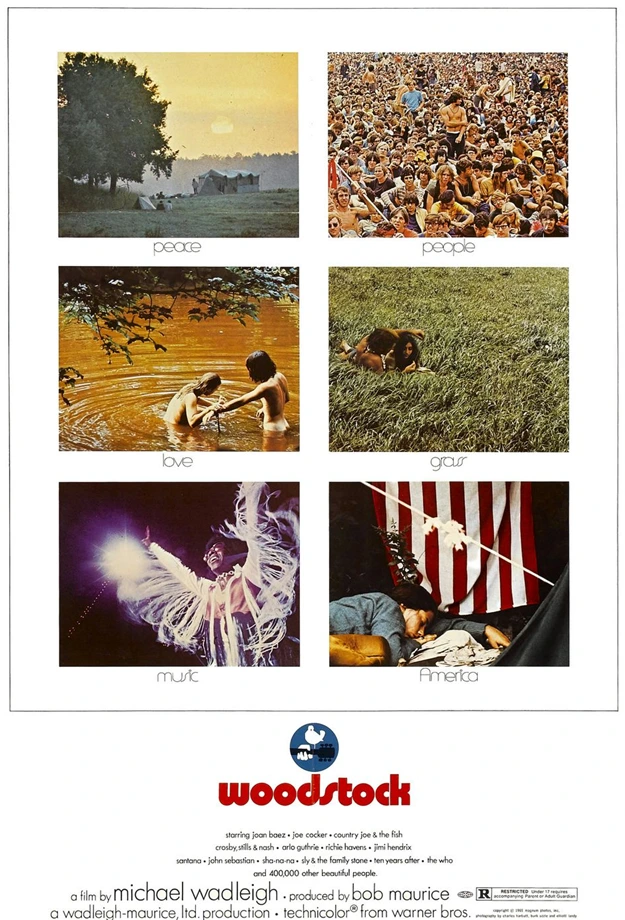Documentary Movie Reviews
(For optimum viewing, adjust the zoom level of your browser to 125%.)
Woodstock (1970)
Rate:
10
Viewed:
2/25

2/25:
If you missed Woodstock in Bethel, New York, from August 15 to 18, 1969, because you weren't there at
the time or hadn't been born yet, there exists a documentary called Woodstock to help you catch up.
There are a lot of versions, and this review is based on the 25th Anniversary Director's Cut that came
out in 1994. The latest is the 40th Anniversary Edition which is longer by including more performances.
While the opening and the closing acts remain the same, all performances in between are out of order. Some of the
best are Richie Havens, Joe Cocker and the Grease Band, Santana, and Crosby, Stills & Nash. The worst is
John Sebastian who was obviously wasted, but to be fair, he, a member of the audience, helped out by filling in
an empty slot. Rivaling him is Ten Years After. It's simply bad music.
Some viewers may be wondering, "Where's Grateful Dead? Creedence Clearwater Revival, the top band at the time
and the first to be signed for Woodstock? Why didn't The Doors show up? How about the Beatles? What's with Janis
Joplin singing poorly?" First of all, there were a lot of delays due to traffic. Therefore, the bands got forced
to wait for their turn. Second, by the time some of them played, it was like 3 o'clock in the morning. Third, let's
keep in mind that thirty-two acts showed up to fill in three days of music. Fourth, if you were unsure of
what Sha Na Na, a 50's-like group, was doing there, some of the scheduled bands were either late or
refused to play during the rain, so it became available.
When Janis Joplin arrived at Woodstock for the first time, she couldn't believe the size of the crowd, which was
estimated 400,000 strong compared to the organizers' initial expectation of 50,000, and grew nervous. To calm down,
she drank a lot of alcohol all day and shot herself up with heroin before getting called at 2:00 AM and played for
an hour. A couple of turns later, The Who started to play which was 5 AM, hence the rising sun.
As for the Grateful Dead, they performed in the middle of heavy rain, and there were electrical shocks
on their instruments. Then, their amps blew out. Hence, the band didn't perform well and later requested not to be
included in the documentary. Ditto for Creedence Clearwater Revival who came out right after them. They
played to a very low-energy crowd who had already fallen asleep, especially due to the 40-minute song by the
Grateful Dead, and it was after midnight.
The Doors was still dealing with the fallout of the notorious Miami incident which occurred in March and was
on the verge of breaking up. Jim Morrison wasn't keen about playing outdoor concerts and thought he would
be assassinated. Ray Manzarek also said, "We never played at Woodstock because we were stupid and turned it down.
We thought it would be a second-class repeat of Monterey Pop Festival." The Beatles was willing to play only
if a slot could be granted to Yoko Ono's Plastic Ono Band, but the organizers said no.
There were between fourteen and eighteen video cameras at Woodstock, resulting in fifty miles of film that
led to the split-screen technique. The whole thing was a nightmare to edit. Some of the songs just went on and
on, and the sound was hard to sync. That's why Thelma Schoonmaker, helped by a team of six editors,
was given an Academy Award nomination which is a rarity for a documentary film.
All in all, the organizers should be thankful for Woodstock because it literally made their money
back and more.